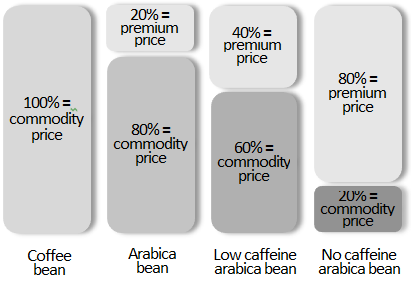Pricing policies are the guidelines aligned to the business plan and marketing strategies that direct the offerer’s pricing practices.
For a better understanding, we will comment on the price level, high price capture, price segmentation, and price flexibility policies.
Price level policy
The price level policy determines the offer’s price level and profitability.
As the offer profitability, the pricing alternatives are premium prices (high profitability), moderate prices (medium profitability), and combative prices (low profitability), both choices made according to the offerer gain targets.
Regarding the price level, the offerer’s major options are (a) higher prices, (b) parity prices, and (c) lower prices than their competitors.
Market leaders usually operate with prices higher than their competitors (for instance, Nike), while followers and challengers use lower prices than the leaders. Parity prices shift competition to other offers’ features instead of price.
High prices capture policy
The high prices capture policy directs sales efforts toward the higher prices customers are willing to pay.
That may be the case for Angus beef prices.
Besides adding value, as a rule, this policy only allows the offerer to reduce such prices in exceptional circumstances.
Price segmentation policy
Segmented prices are differentiated offer prices for distinct market segments.
The pricing segmentation objective is to operate with prices most appropriate for each type of customer, product, region, activity, etc.
The basis of price segmentation can be the offer’s features (intrinsic and extrinsic attributes) as particularities of demand (volume, moment, and customer preferences).
A sample of this kind of segmentation is the prices charged by common, arabica, low caffeine, and caffeine-free market segments of coffee. As illustrated in the following diagram, each segment is rewarded with a different price.

Price flexibility policy
The price flexibility policy concerns the price maneuvering space granted to the selling agents.
Its main alternatives are (a) fixed price, (b) price band, (c) price with probation, (d) price per authority, and (e) budgeted price.
Furthermore, pricing policies can be comprehensive, specific, or even overlapping. The offerer’s expectation, the offer’s attributes, the market conditions, and the customer’s preference will indicate the most appropriate practices for each market, moment, or purpose.
C. L. Eckhard, author of Pricing in Agribusiness: setting and managing prices for better sales margins.











 Claudio Luiz Eckhard is a former professor, business consultant, and author of the books “Ajustando o Rumo”[Adjusting the Business Course], “Gestão pela Margem”[Management by Margin], “A Empresa Saudável”[The Healthy Company], and “Pricing no Agribusiness”[Pricing in Agribusiness].
Claudio Luiz Eckhard is a former professor, business consultant, and author of the books “Ajustando o Rumo”[Adjusting the Business Course], “Gestão pela Margem”[Management by Margin], “A Empresa Saudável”[The Healthy Company], and “Pricing no Agribusiness”[Pricing in Agribusiness].


